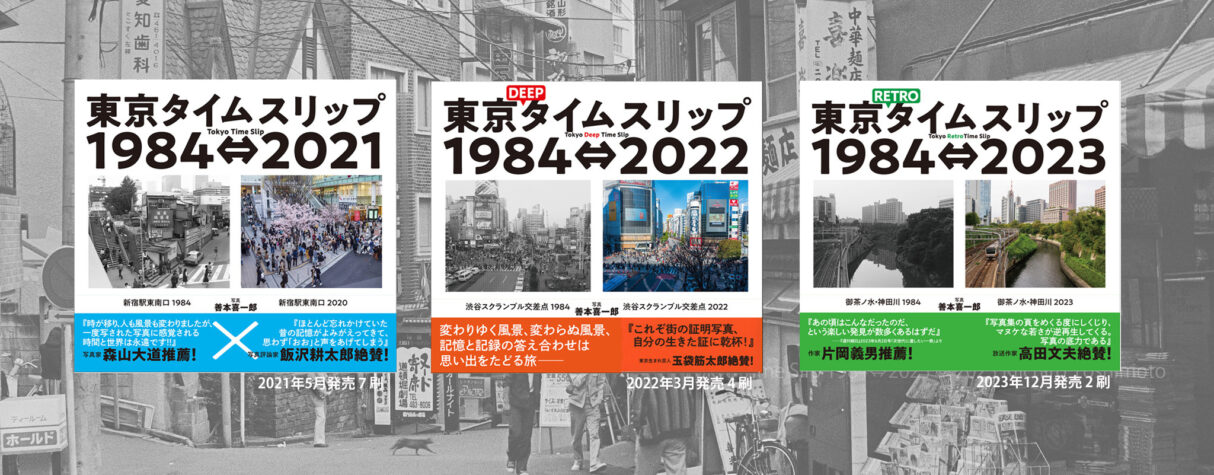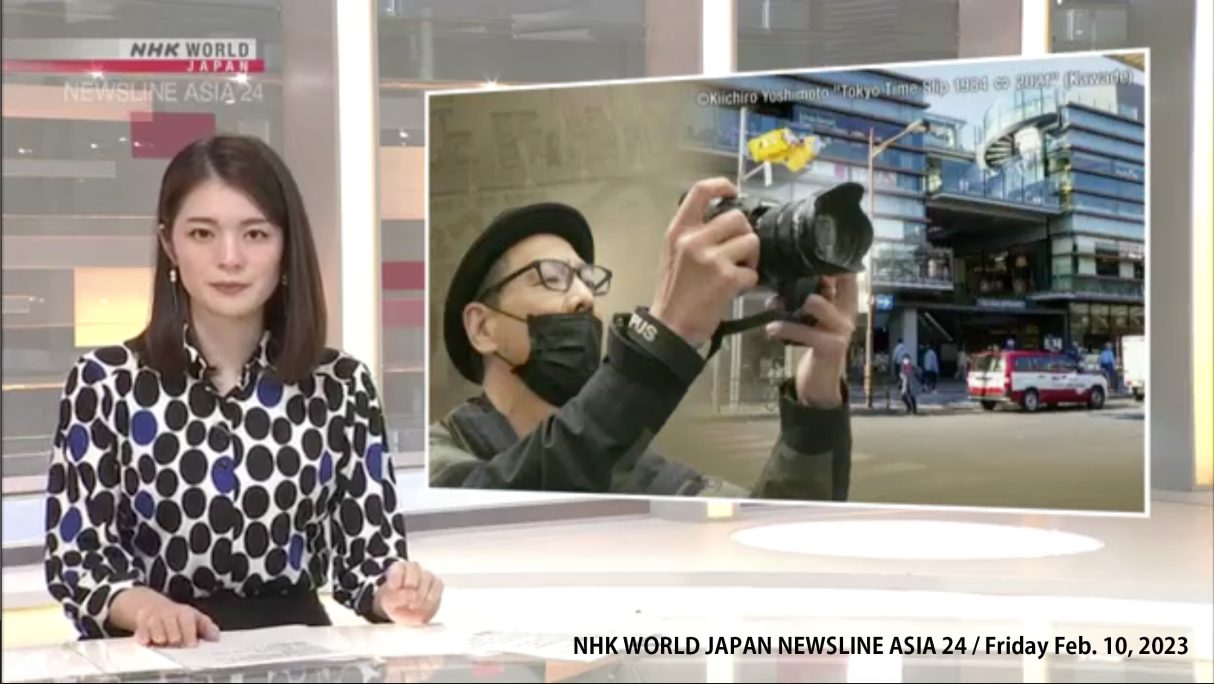
Shinjuku Station South Exit 1984 Kiichiro Yoshimoto

⸻
Kiichiro yoshimoto’s Photographic Philosophy: Capturing the “Layers of Time”
The works of photographer Kiichiro Yoshimoto always capture “time.”
He gently superimposes the atmosphere of the streets and lifestyles that once existed there onto the landscape that is before his eyes today.
The “Tokyo Time Slip” series, which brings together memories of the Showa era and the present day in a single photograph, is a symbolic example of this approach.
The past is etched into the landscape
The landscapes that appear in Yoshimoto’s photographs are ordinary scenes of Tokyo.
Yet, one is made aware that another “landscape” lies hidden beneath the surface.
This is not a reproduction of old black-and-white photographs.
When faced with a single image where “now” and ‘then’ quietly overlap, the “memories” within the viewer are evoked.
There lies a “depth of time” that cannot be captured by mere documentary photography.
“Standing” rather than “shooting”
Yoshimoto often says,
“It’s not where you shoot, but where you stand that matters.”
The atmosphere and human activities that flowed through that place, the things that remained unchanged, the things that changed…
Photography is also the process of excavating the “layers of memory” in a landscape.
It feels as though you are peering into “time itself” through the photograph.
Photographs are triggers for memory.
When you encounter Yoshimoto’s photographs, you feel that “this is connected to my own memories.”
Even if you don’t know the place depicted in the photograph, it feels somehow familiar.
It feels like you’ve seen it before, yet it also feels like you’re seeing it for the first time.
That “discrepancy” is fascinating.
It’s because photographs don’t present “answers,” but rather pose “questions.”
Traveling through time with photographs
Photographs have the power to “capture a moment.”
However, photographer Yoshimoto Kiichiro seems to use that power in a slightly different way.
Within a single photograph, he overlays the past, the present, and the viewer’s own memories.
It’s like experiencing a journey through time through the photograph.
Finally
Photographs unfreeze time.
Landscapes hold the traces of people’s lives.
In Kiichiro Yoshimoto’s photographs, there is indeed a quiet message about “how to live in the present.”
Elias Moreau
“Tokyo Time Slip 1984⇔2021” (Kawade Shobo Shinsha)
“Tokyo DEEP Time Slip 1984⇔2022”
“Tokyo RETRO Time Slip 1984⇔2023”
45,000 followers
Instagram Tokyo Timeslip
https://www.instagram.com/tokyo_timeslip/
「写真における時間の重層性──善本喜一郎の都市記憶論」
善本喜一郎の写真哲学──「時間のレイヤー」を写すということ
写真家・善本喜一郎の作品には、いつも「時間」が写り込んでいる。
いま目の前にある風景に、かつてそこにあった街並みや暮らしの気配を、そっと重ねる。
昭和の記憶と令和の現在を一枚の写真に共存させる「東京タイムスリップ」シリーズは、その象徴的な取り組みだ。
過去は、風景に刻まれている
善本の写真に登場するのは、どこにでもある東京の風景。
けれど、その奥にもうひとつの“風景”が隠れていることに、気づかされる。
古い白黒写真を再現したわけではない。
「いま」と「かつて」が静かに折り重なった一枚を前にすると、見る人の中にある“記憶”が呼び起こされてくる。
そこには、ただの記録写真では生まれない“時間の奥行き”がある。
「撮る」ではなく「立つ」
善本はよく、こんなことを語っている。
「どこで撮るかではなく、どこに立つかが大事なんです」
その場所に流れていた空気や人の営み、変わらなかったもの、変わってしまったもの――。
写真は風景の“記憶の地層”を掘り起こす作業でもある。
まるで、写真を通して「時間そのもの」を覗き込んでいるような感覚。
写真は記憶のトリガー
善本の写真に触れて感じるのは、「これは、自分の記憶にもつながっている」ということ。
そこに写っている場所を知らなくても、なぜか懐かしい。
見たことがあるような気がする。でも、初めて見る気もする。
その“ズレ”が面白い。
それは、写真が「正解」を提示するものではなく、「問い」を差し出すものだからだろう。
写真で、時を旅する
写真には「瞬間を切り取る」力がある。
けれど善本喜一郎という写真家は、その力を少しだけ逆方向に使っているように見える。
一枚の写真の中に、過去と現在、そして見る人自身の記憶を重ねていく。
それはまるで、写真を通して「時間を旅する」体験だ。
最後に
写真は、時間を解凍する。
風景には、人が生きた証が宿っている。
そんな善本喜一郎の写真には、「いまをどう生きるか」という静かなメッセージも、確かに写っている。
Elias Moreau

「東京タイムスリップ1984⇔2021」(河出書房新社)
「東京DEEPタイムスリップ1984⇔2022」
「東京RETROタイムスリップ1984⇔2023」
4万5000フォロワー
インスタグラム Tokyo Timeslip
https://www.instagram.com/tokyo_timeslip/

「Tokyo changes fast, and Yoshimoto now finds himself a documentarian of the ages.」
Tokyo then and now: Photographer documents four decades of change | NHK WORLD-JAPAN News



